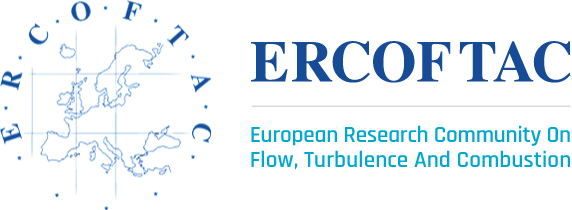Summer School on Small-scale turbulence: theory, phenomenology and applications
13th - 25th August 2007
Cargèse, Corsica, FRANCE
The school is aimed at inferring a state-of-the art of our knowledge about small-scale turbulence, from both a fundamental and applied viewpoint. Some applications to be discussed are SGS models, micro-mixing models, influence of turbulence on droplets formation and other issues related to combustion.
Topics :
Despite its large number of applications such as climate, biological flows, chemical engineering, turbulence is still today one of the least understood phenomena in physics. Though the Navier-Stokes equations describing the fluid motion are relatively simple, their non-linear character does not allow for a general solution. The origin of this impossibility, associated with a high number of degrees of freedom and a very high sensitivity to initial conditions, has been only recently understood via dynamical systems theory. In the absence of unifying theory, progress in understanding turbulent flows is primarily based on experimental measurements, numerical simulations and on our ability to interpret results using specific tools (wavelets, spectra etc.). Understanding turbulence is a major goal for industrial and environmental applications : reducing noise and pollution, energy economy, optimisation of chemical reactors, better combustion efficiency etc. Because of the complexity of these applications, a reliable description and modelling of turbulent flows is based on a good understanding of turbulence, from a fundamental viewpoint.
Turbulent flows are known to contain a wide range of scales, each range of scales being characterized by different phenomena. For instance, the dissipation process is known to be a small-scale phenomenon. Therefore, in different industrial process, a particularly important role is played by the small scales. They must be properly taken into account in sub-grid scale (SGS) models. Another example deals with modelling micromixing (chemical industry, combustion), in which the small scales are the most important factors.
In this context, one fundamental question is are these small scales universal? If so, under which conditions? If not, when? The non-universality of the small-scale behaviour, closely related to small-scale anisotropy, can be recast and presumably explained in different contexts :
* In the context of the local structure of turbulence, from a kinematic point of view. It is interesting to detect the role of local velocity gradients, under the effect of strain and rotation. Particular attention must be paid to the dissipation rate of the scalar variance, as well as to its local anisotropic behaviour. The influence of each single mechanism (straining, rotation, molecular diffusion) can be formally studied in model configurations. However, their combination in the case of a scalar transported by a turbulent flow leads to complex scenarios.
* In the context of the statistical approach, when the small scales are explicitly linked to the turbulence forcing. Different subjects are to be discussed :
o The role played by coherent structures. Turbulence in rotation.
o Inertial transport, e.g. droplets transport.
o Etc...
Another important question concern the correct measurements of small-scale quantities (using either hot/cold wires, or lasers : PIV, LDV, PLIF). This exclusively aspect experimental is worth discussing, with the aim of discussing on the limits of the experimental techniques.
Another aspect to be discussed concerns the practical application of the fundamental description of small-scale turbulence. We particularly aim at non-reacting mixing, as a first-level stage of reacting mixing. This phase of mixing preparation is particularly important for reactive flows (chemical industry, combustion etc.). As an example, as far as combustion is concerned, a fine and precise characterization of the air/gaseous fuel mixing, in connection with better turbulent combustion, is recently of particular importance (expensive fuels, pollution reduction, energy economy etc.). In this direction, it is important to better understand the micromixing properties, i.e. of small-scale mixing, where the chemical reactions that constitute combustion take place. A number of questions concerning reactive flows remain. As an example, the alignment of the mixing fraction gradient with the velocity gradient eigenvectors controls the evolution of the scalar dissipation and thus plays an important role in the non-premixed turbulent flames.
We note finally that a correct and quantitative diagnostic of small scales in turbulent mixing would be useful for the LES technique, in the context of sub-grid scale models.
Organizer: Luminita DANAILA , danaila@coria.fr , CORIA, Rouen
Co-organizing associations:
GdR “Turbulence” 2865 of CNRS; AFM, GST13 “Turbulence and fluid mechanics”
Pilot Centers and SIGS involved: PC France West ;
- SIG 4 “Turbulence in compressible flows”
- SIG 35 “Multipoint Turbulence Structure and Modelling”
Related Events
Astroflu IV
ERCOFTAC Workshop Astroflu IV 23rd - 24th January 2019, École Centrale de Lyon Organized by: PC Henri Bénard, SIG35 and SIG4. Motivations and Objectives: The two first local events ‘ASTROFLU’ were principally organised by the Henri Bénard PC in Lyon, 12-13/11/2008 and 15/12/2011. The third one,
23 Jan 2019Related News
Sorry, there are currently no articles to show.
To view a full list of current news, click here
